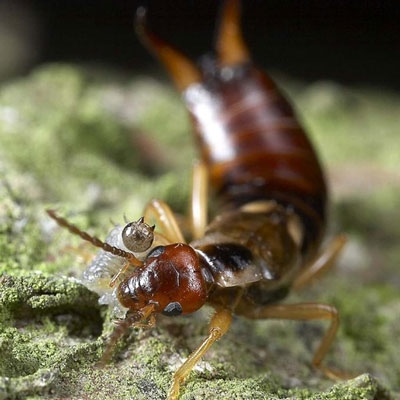At the 2013 Orchard Pest and Disease Management Conference recently held in Oregon USA, by the Tree Fruit Research & Extension Center, Washington State University, a fascinating report was presented on an extensive project to enhance biological control in orchards.
Over the last four years a regional project, including a team of ten scientists from Washington, Oregon and California, has been focussed on efforts to enhance biological control in apple, pear and walnut orchards.
Pest management programs in these orchard crops have been changing due to the loss of organo-phosphate (OP) insecticides and the introduction of 23 new pesticides.
The situation in Australia is similar, although we do have the option of some OPs like Gusathion, but not as many new pesticides in the armoury.
The shift in the USA is to the increased use of mating disruption, while in Australia it is the reverse. The area in Australia under mating disruption for both codling moth and Oriental fruit moth is decreasing. Sadly this limits the opportunity to expand the use of biological control in orchard systems through the conservation and enhancement of natural enemies.
This particular project, Enhancing biological control to stabilize western orchard IPM systems has focussed on several aspects to better understand natural enemies in these orchards.
The team has:
- Evaluated pesticide effects on eight common natural enemies
- Developed new monitoring tools for natural enemies which also enabled us to generate phenology models for some key species
- Investigated the predators most responsible for consuming codling moth using gut content analysis.
The team presented a synthesis of results and discussed how this new information can benefit pest management decision makers in orchards.
This has given the team the avenue to discuss new ideas and directions for future research that have arisen from knowledge gained in this project.
Enhancing biological systems
While the findings of this project need to be verified and validated for Australia, it does steer us in a direction to consider what biological control systems are operating and effective, and what we can do to enhance them in our orchards.
Over the next few articles in Tree Fruit, we will contemplate the key findings that this multidisciplinary team of eminent researchers have found.
Some interesting findings: Carabid beetles & earwigs
To wet your appetite, the project found very interesting results on who is eating the dreaded codling moth.
In an earlier article we discussed the Carabid beetle as an important but unknown and unrecognised predator. This beetle has been found to be only second to earwigs as a major predator of codling moth.
We know the importance of earwigs—especially in apple orchards—for their appetite for woolly apple aphid. This project has highlighted it as a key predator for codling moth control.
Feeding time
So when do these predators ingest codling moth?
Codling moth larvae, once fully grown inside apples or pears, leave the fruit during summer and autumn and seek cocooning sites.
The codling moths either emerge as second-generation adults over the summer, or overwinter as mature larvae until the following spring.
The cocooned larvae can be found in bark crevices on trees, on props, or in leaf litter and other organic matter on the orchard floor.
Generalist predators active in the tree canopy, the trunk, or on the ground may discover and feed on codling moth larvae in these places.
The project team believe that predation on these codling moth larvae, either moving to or in cocooning sites, can help reduce population levels the following season. However, real numbers were needed to support this belief.
See this article and images in Tree Fruit June 2013




















